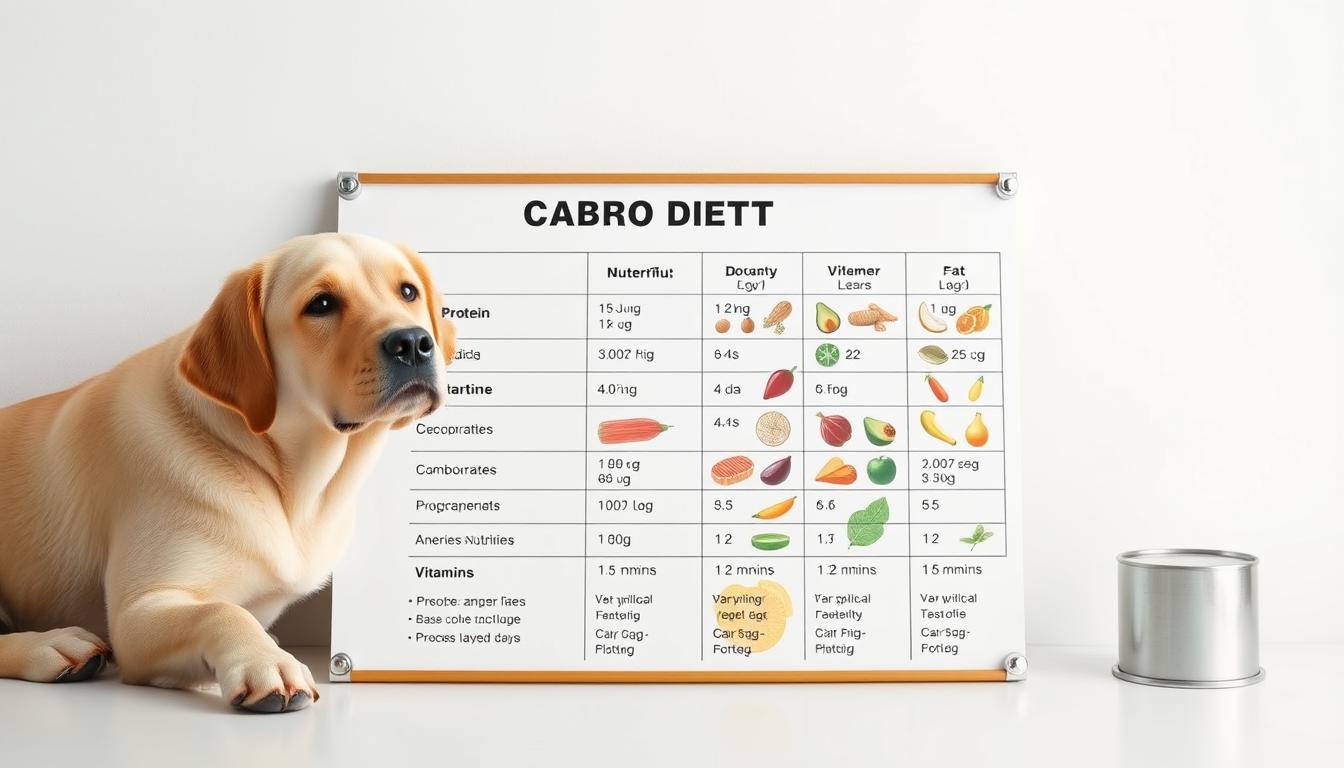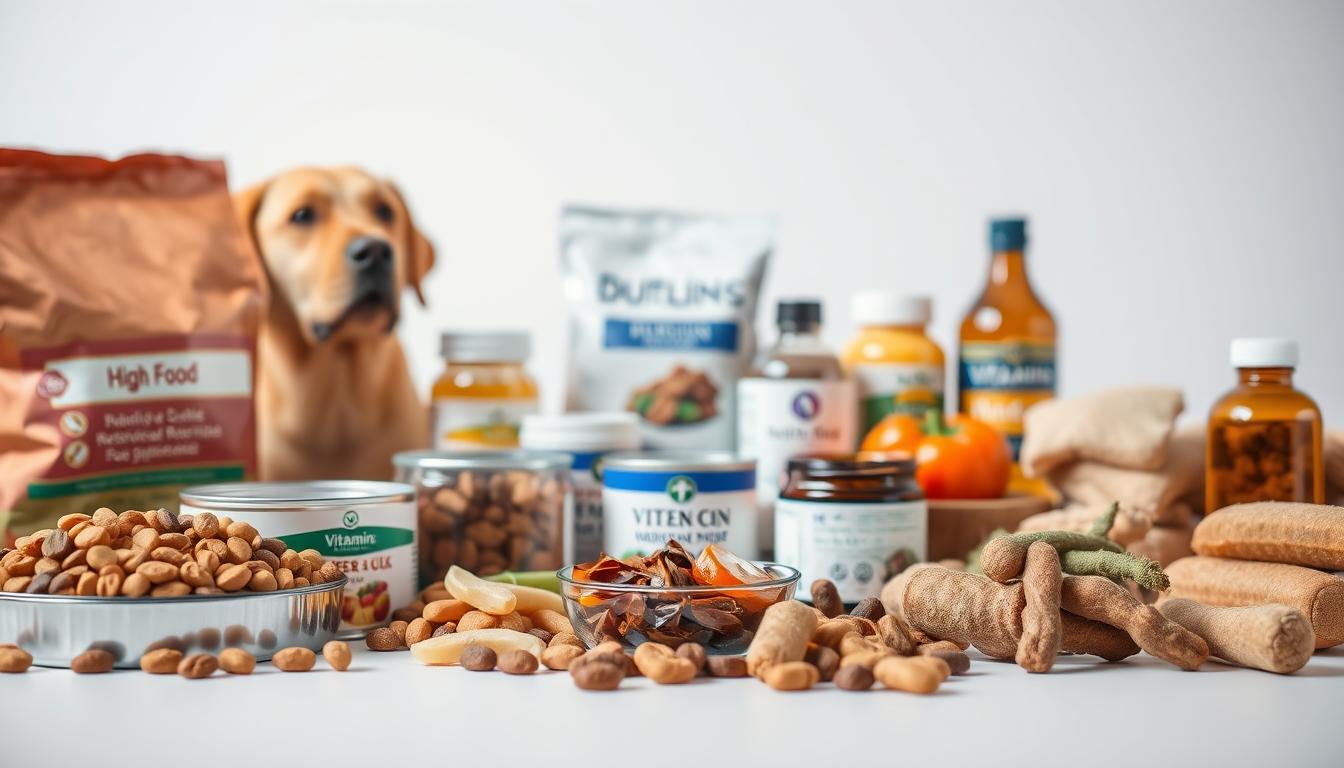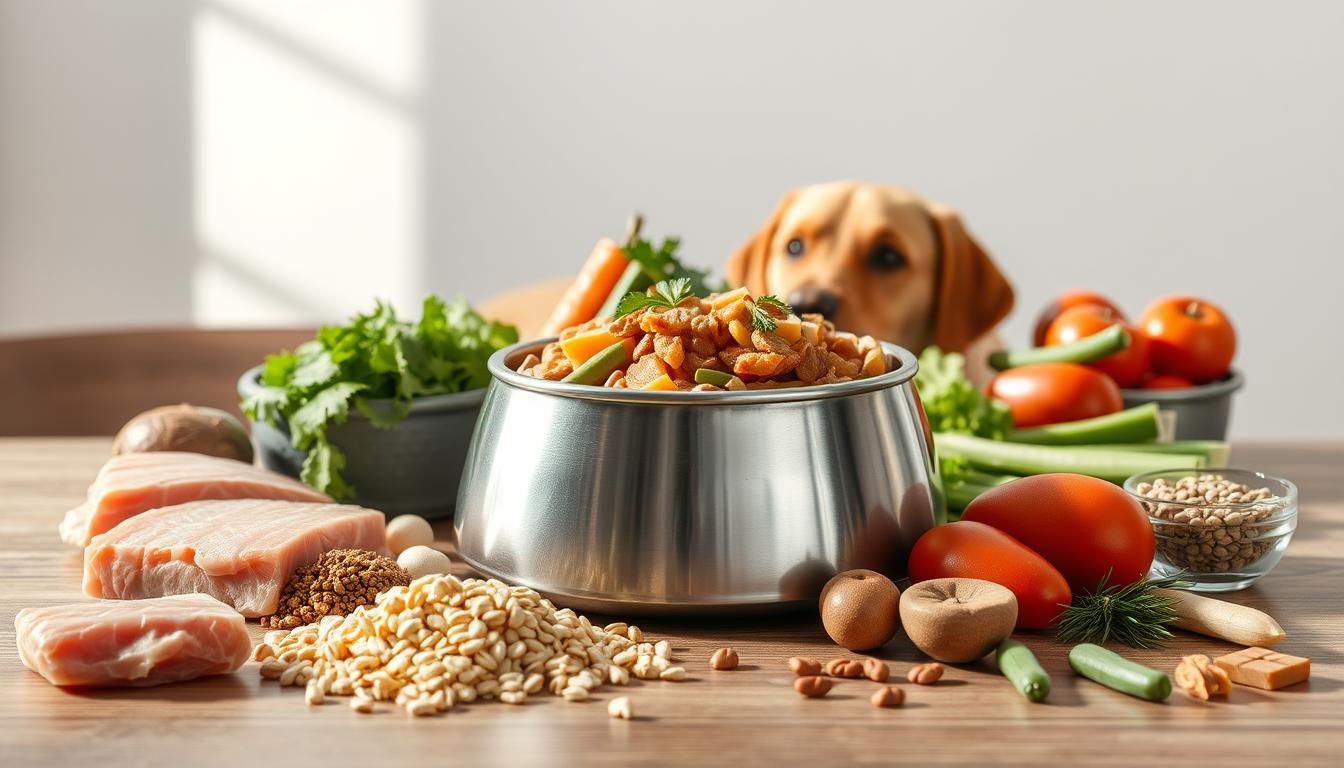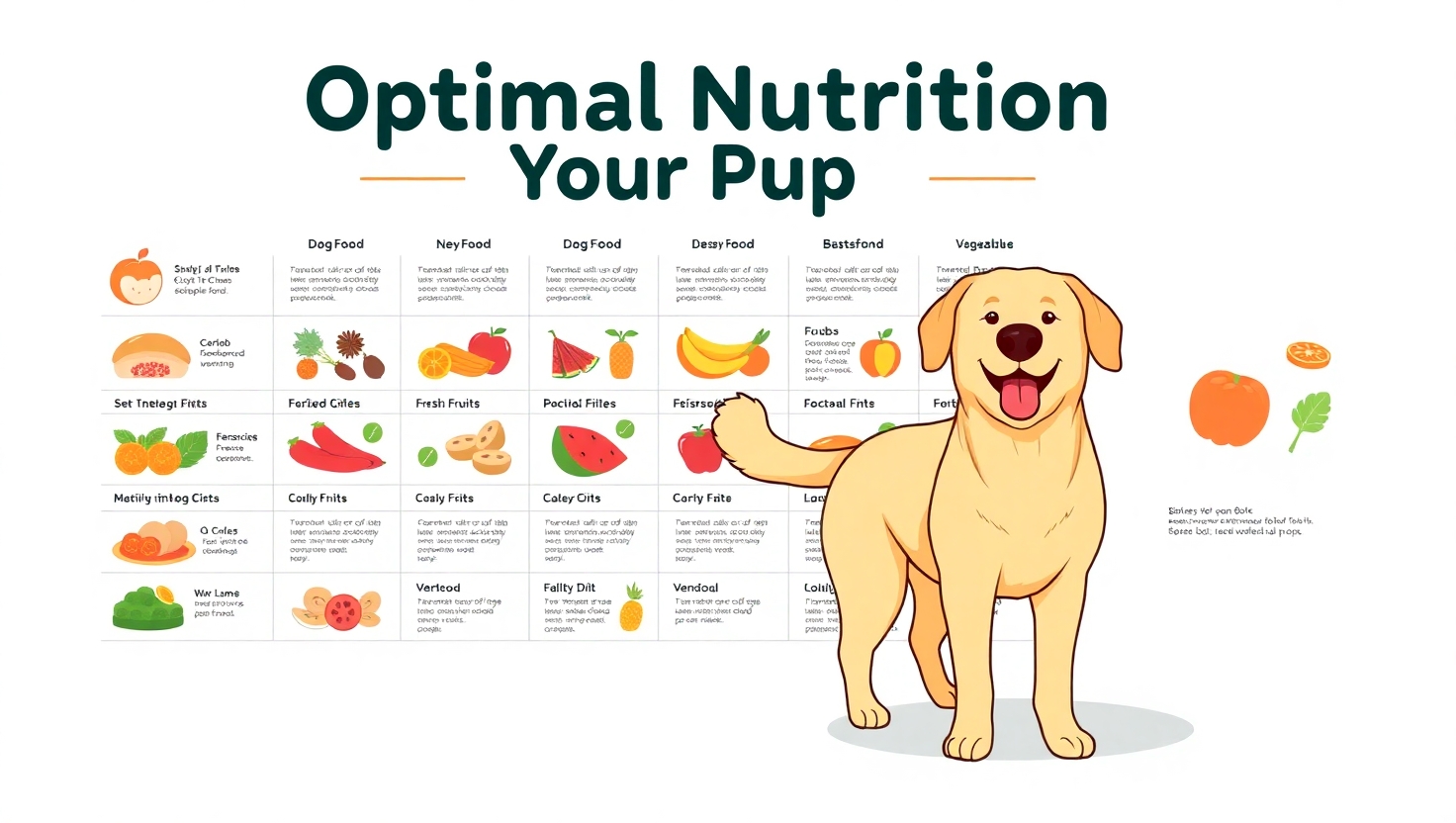Welcome to your go-to resource for crafting a tailored meal plan that supports your furry companion’s vitality. Proper nutrition forms the foundation of a happy, active lifestyle for your four-legged family member, especially as their needs evolve with age.

High-quality protein sources like real meat fuel muscle development, while vegetables provide essential vitamins. Avoid products with corn or wheat fillers—these additives offer little nutritional value. Growing puppies require 30% more calories than adults to support their rapid growth phases.
Balanced meals directly impact energy levels, coat shine, and long-term joint health. Whether you’re raising a playful puppy or caring for a senior companion, understanding portion sizes and ingredient quality ensures they thrive at every life stage.
Key Takeaways
- Prioritize protein-rich meals with recognizable ingredients
- Eliminate filler-heavy foods lacking nutritional value
- Adjust calorie intake for puppies versus adult companions
- Monitor portion sizes to maintain ideal weight
- Consult your vet for personalized feeding strategies
Understanding Your Labrador’s Nutritional Needs
Proper nutrition fuels every wagging tail and playful leap. Just like humans, dogs need six essential components to thrive: water, proteins, fats, carbohydrates, vitamins, and minerals. These elements work together to support everything from muscle development to immune function.
Essential Nutrients and Their Benefits

| Nutrient | Key Benefits | Food Sources |
|---|---|---|
| Proteins | Build muscles & repair tissues | Chicken, fish, eggs |
| Fats | Energy reserve & coat health | Salmon oil, flaxseed |
| Carbohydrates | Quick energy supply | Sweet potatoes, oats |
| Vitamins | Boost immunity | Carrots, blueberries |
Factors Influencing Diet Choices
Age and activity level dramatically affect calorie needs. Puppies require 25% more protein than adults during growth spurts. Active dogs burn calories faster than couch companions.
Health status matters too. Spayed pets often need fewer calories. Always consult your vet to tailor meals for specific needs.
What Makes a Balanced Diet for Labradors
Crafting the perfect meal plan means achieving nutritional harmony. Homeostasis—your companion’s body functioning at its best—relies on precise ratios of proteins, fats, and carbohydrates. Variety matters because no single food provides all essential elements.
Fueling Active Lifestyles
| Nutrient | Role | Top Sources |
|---|---|---|
| Proteins | Muscle repair & enzyme production | Chicken, turkey, lean beef |
| Fats | Energy storage & skin health | Fish oil, coconut oil |
| Carbs | Quick fuel & digestion support | Pumpkin, quinoa, peas |

Micronutrient Magic
Vitamins and minerals act like tiny helpers in every bodily process. Calcium strengthens bones, while zinc boosts immunity. Colorful vegetables and fruits deliver these vital compounds naturally.
Rotate protein sources and include whole foods for nutrient diversity. Fresh spinach offers iron, while blueberries provide antioxidants. Quality ingredients ensure meals meet all needs without artificial additives.
Creating an Effective “labrador dog diet chart”
Custom meal plans act like GPS for your furry friend’s health journey. Every pet has unique requirements that change with seasons of life and lifestyle shifts. Start by mapping out their ideal physique rather than current measurements – this becomes your destination point.

Daily Nutrition Targets
Active companions burning energy through hikes or agility training need 20-40% more calories than relaxed homebodies. Use this simple formula as your compass:
| Activity Level | Calories Per Pound |
|---|---|
| Low (indoors most days) | 25 |
| Moderate (daily walks) | 27 |
| High (sports/swimming) | 30+ |
Smart Portion Strategies
Measure meals using a standardized cup rather than guessing. Split the total amount per day into 2-3 feedings for better digestion. Puppies under six months thrive with three smaller meals.
Track body condition monthly – you should feel ribs without seeing them. Adjust dog food quantities if your pal gains or loses more than 5% of their target weight. Remember, treats count toward daily totals!
Update your feeding guide every 6 months or after major life changes. Nursing mothers and senior companions have different needs than adolescents. Work with your vet to refine portions as seasons change.
Meal Planning for Puppies and Adult Dogs
Building a nutritional roadmap requires understanding how needs shift from energetic youth to steady adulthood. Young companions experience extended development phases demanding precise fuel blends, while mature pals thrive on consistent maintenance plans.

Fueling Development Stages
Growing pups need 22-32% protein to support muscle formation and bone strength. Calcium-to-phosphorus ratios of 1.2:1 prevent joint issues during their 18-24 month maturation. Feed three to four small meals daily until four months old to stabilize energy levels.
Consider these essentials for early nutrition:
- High-quality animal proteins as first ingredients
- DHA supplements for brain development
- Controlled calorie intake to avoid rapid weight gain
Maintenance Mode Essentials
Transition to adult formulas gradually between 12-18 months. Reduce meals to twice daily while monitoring body condition. Mature companions benefit from:
- 18-25% protein content
- Joint-supporting nutrients like glucosamine
- Fiber-rich ingredients for digestive health
Adjust portions seasonally – active summer months might require 10% more calories than winter. Always consult your vet when changing meal plans, especially after spaying/neutering.
Evaluating Commercial Dog Food vs. Home-Cooked Options
Choosing the right nourishment strategy requires balancing convenience with nutritional value. Both store-bought and homemade approaches have unique strengths, but understanding their limitations helps create sustainable feeding routines.

Pros and Cons of Dry Dog Food
Kibble dominates pet stores for good reason—it’s shelf-stable and portion-controlled. Premium brands like Taste of the Wild and Canidae Pure use real meat as primary ingredients, avoiding corn-based fillers. Key advantages include:
- Complete nutrition meeting AAFCO standards
- Dental benefits from crunchy texture
- Cost-effective for multi-pet households
However, cheaper options often pack empty calories from wheat or soy. Always check labels for meat sources listed first.
Benefits of Fresh, Home-Prepared Meals
Whipping up meals lets you control every component—ideal for sensitive stomachs. Fresh proteins like turkey or salmon paired with steamed veggies often improve coat shine and digestion. Consider these points:
- Requires veterinary guidance for balanced recipes
- Demands weekly meal prep time
- Needs calcium or omega-3 supplements
Many owners mix both methods, using quality kibble as a base while adding cooked sweet potatoes or green beans for variety. Rotate proteins monthly to prevent allergies.
Understanding Raw Feeding and BARF Diets
Exploring alternative feeding methods opens new possibilities for pet owners seeking ancestral-inspired nutrition. The BARF approach focuses on uncooked ingredients that mirror what wild canines might consume, prioritizing freshness and biological appropriateness.

What is a BARF Diet?
This meal plan follows a 70/10/10/10 formula: muscle meat, edible bones, organs, and plant matter. Unlike processed options, it skips artificial preservatives while delivering nutrients in their natural state. Chicken thighs, beef liver, and leafy greens become staple ingredients.
Essential components work together like puzzle pieces:
- Muscle tissue provides amino acids for lean mass
- Bones supply calcium for skeletal strength
- Organs deliver concentrated vitamins
- Vegetables offer digestive fiber
Steps for Safe Raw Meal Preparation
Start with human-grade meat from trusted butchers or farms. Freeze ingredients for 72 hours to reduce pathogens before preparation. Use separate cutting boards and utensils to prevent cross-contamination.
Follow this safety checklist:
- Thaw frozen items in refrigerators, not countertops
- Serve meals chilled or at room temperature
- Discard uneaten food within 30 minutes
Portion sizes typically equal 2-3% of your companion’s target weight. Active pets might need adjustments upward, while seniors often require less. Always discuss dietary changes with your vet to address potential problems like nutrient gaps or Salmonella risks.
How to Read and Understand Dog Food Labels
Decoding pet food packaging starts with knowing what to look for. Ingredient lists reveal a product’s true quality, organized by weight from heaviest to lightest. Top slots should feature specific protein sources like chicken or salmon—not vague terms like “meat meal.”
Identifying High-Quality Ingredients
Premium options name recognizable components, such as “deboned turkey” or “whole herring.” These provide essential amino acids pets need for energy and muscle health. Avoid plant-based proteins dominating the first five ingredients—they’re harder for furry friends to digest.
Avoiding Fillers and Additives
Corn, wheat, and soy often pad cheaper formulas without offering real nutrition. Watch for artificial preservatives like BHT—natural alternatives like rosemary extract are safer. Always check for AAFCO statements confirming complete, balanced meals.
Remember: transparency matters. Trustworthy brands detail their ingredient origins and avoid mystery meats. Your companion’s bowl deserves clarity, not clever marketing tricks.
FAQ’s
How much should I feed my Labrador daily?
Portions depend on weight, age, and activity level. Adult dogs typically need 2.5–3 cups of high-quality kibble split into two meals. Always check the food’s feeding guide and consult your vet for personalized advice.
What nutrients are most important for Labradors?
Protein (25–30% for puppies, 18–25% for adults) supports muscle health. Healthy fats like omega-3s promote skin and coat vitality. Complex carbs, vitamins (A, D, E), and minerals (calcium, phosphorus) round out a balanced diet.
Is commercial kibble better than homemade meals?
Commercial options like Purina Pro Plan offer balanced nutrition with convenience. Homemade meals allow control over ingredients but require vet-approved recipes to avoid nutrient gaps. Mixing both can work well!
Can Labradors thrive on a raw food diet?
Yes, but safety is key. BARF (Biologically Appropriate Raw Food) diets include raw meat, bones, and veggies. Always freeze meat first to kill bacteria and consult a vet to ensure meals meet nutritional needs.
How do I pick high-quality dog food?
Look for named protein sources (chicken meal, salmon) as the first ingredient. Avoid fillers like corn syrup or artificial preservatives. Brands like Blue Buffalo or Hill’s Science Diet often prioritize whole-food ingredients.
How often should puppies eat compared to adults?
Puppies need 3–4 small meals daily for steady growth. Transition to two meals by six months. Adults do best with twice-daily feedings to maintain energy and prevent overeating.
What if my dog gains too much weight?
Adjust portions by 10–20% and switch to a lower-calorie formula. Increase exercise and avoid table scraps. Regular vet check-ups help track progress using a body condition score chart.
Are grain-free diets safe for Labradors?
Only if they have grain allergies, which are rare. Many grain-free foods replace grains with starchy fillers like potatoes, which might not benefit all dogs. Discuss options with your vet first.
Should I add supplements to my dog’s meals?
Most high-quality foods already include essential nutrients. Supplements like fish oil or glucosamine can help joints or skin issues but should only be used under veterinary guidance.
Also Read:


